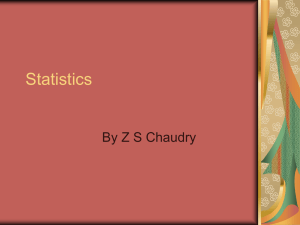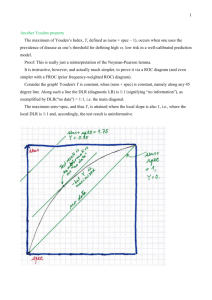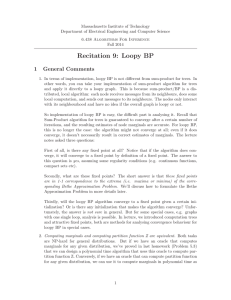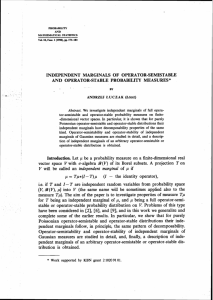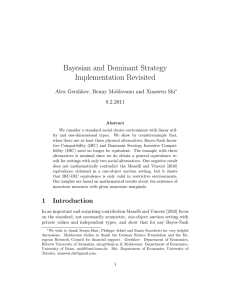Odds Ratios, Phi, and Base Rates
advertisement
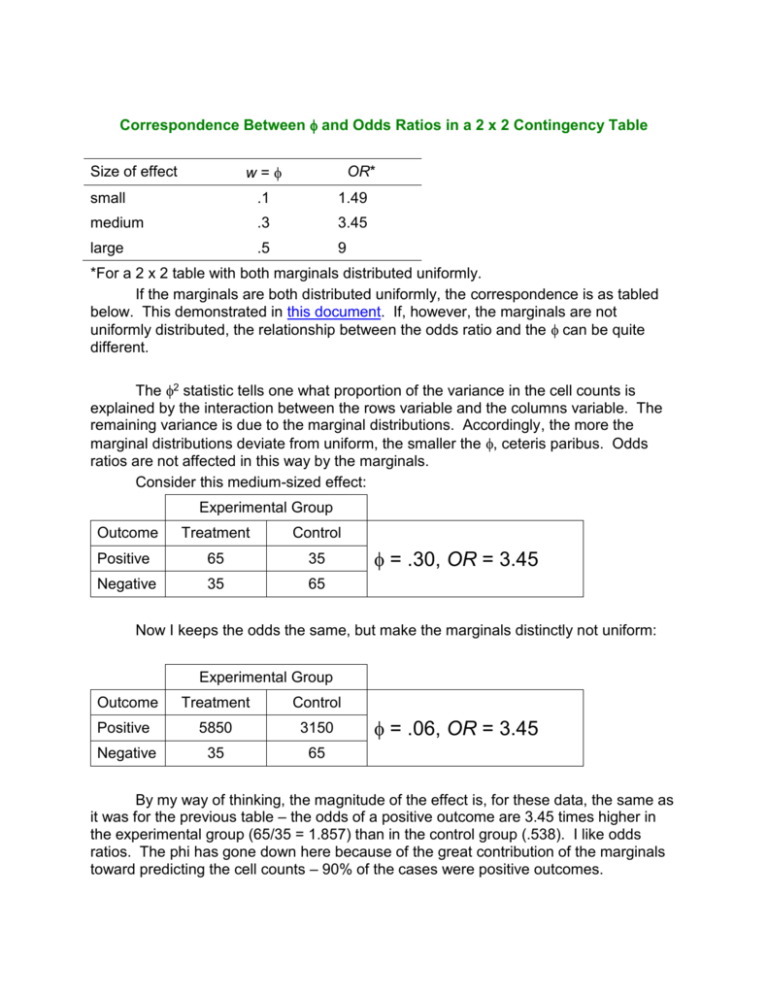
Correspondence Between and Odds Ratios in a 2 x 2 Contingency Table w= Size of effect OR* small .1 1.49 medium .3 3.45 large .5 9 *For a 2 x 2 table with both marginals distributed uniformly. If the marginals are both distributed uniformly, the correspondence is as tabled below. This demonstrated in this document. If, however, the marginals are not uniformly distributed, the relationship between the odds ratio and the can be quite different. The 2 statistic tells one what proportion of the variance in the cell counts is explained by the interaction between the rows variable and the columns variable. The remaining variance is due to the marginal distributions. Accordingly, the more the marginal distributions deviate from uniform, the smaller the , ceteris paribus. Odds ratios are not affected in this way by the marginals. Consider this medium-sized effect: Experimental Group Outcome Treatment Control Positive 65 35 Negative 35 65 = .30, OR = 3.45 Now I keeps the odds the same, but make the marginals distinctly not uniform: Experimental Group Outcome Treatment Control Positive 5850 3150 Negative 35 65 = .06, OR = 3.45 By my way of thinking, the magnitude of the effect is, for these data, the same as it was for the previous table – the odds of a positive outcome are 3.45 times higher in the experimental group (65/35 = 1.857) than in the control group (.538). I like odds ratios. The phi has gone down here because of the great contribution of the marginals toward predicting the cell counts – 90% of the cases were positive outcomes. So, which should you report, or OR? I recommend reporting both and, when the marginals are distinctly not uniform, explaining how is greatly affected by nonuniformity of the marginals but OR is not. Here are some more examples. With uniform marginals, a phi of .1 corresponds to an OR of 1.49. Here I increase the base rate of positive outcomes and the ratio of the odds, keeping at .1. Experimental Group Outcome Treatment Control Positive 800 100 Negative 78 22 = .10, OR = 2.26 With uniform marginals, a phi of .3 corresponds to an OR of 3.45. Here I increase the base rate of positive outcomes and the ratio of the odds, keeping at .3. Experimental Group Outcome Treatment Control Positive 795 96 Negative 55 46 = .30, OR = 6.93 With uniform marginals, a phi of .5 corresponds to an OR of 9. Here I increase the base rate of positive outcomes and the ratio of the odds, keeping at .5. Experimental Group Outcome Treatment Control Positive 800 99 Negative 26 74 = .50, OR = 23.00 In a very similar fashion, when comparing two groups’ means, the correspondence between the standardized difference between means (Cohen’s d) and the point-biserial correlation coefficient (when squared, a proportion of variance, also known as eta-squared) depends on how much the within-group sample sizes differ from each other. See my document Effect of n1/n2 on Estimated d and rpb. Karl L. Wuensch, East Carolina University, November, 2009.


